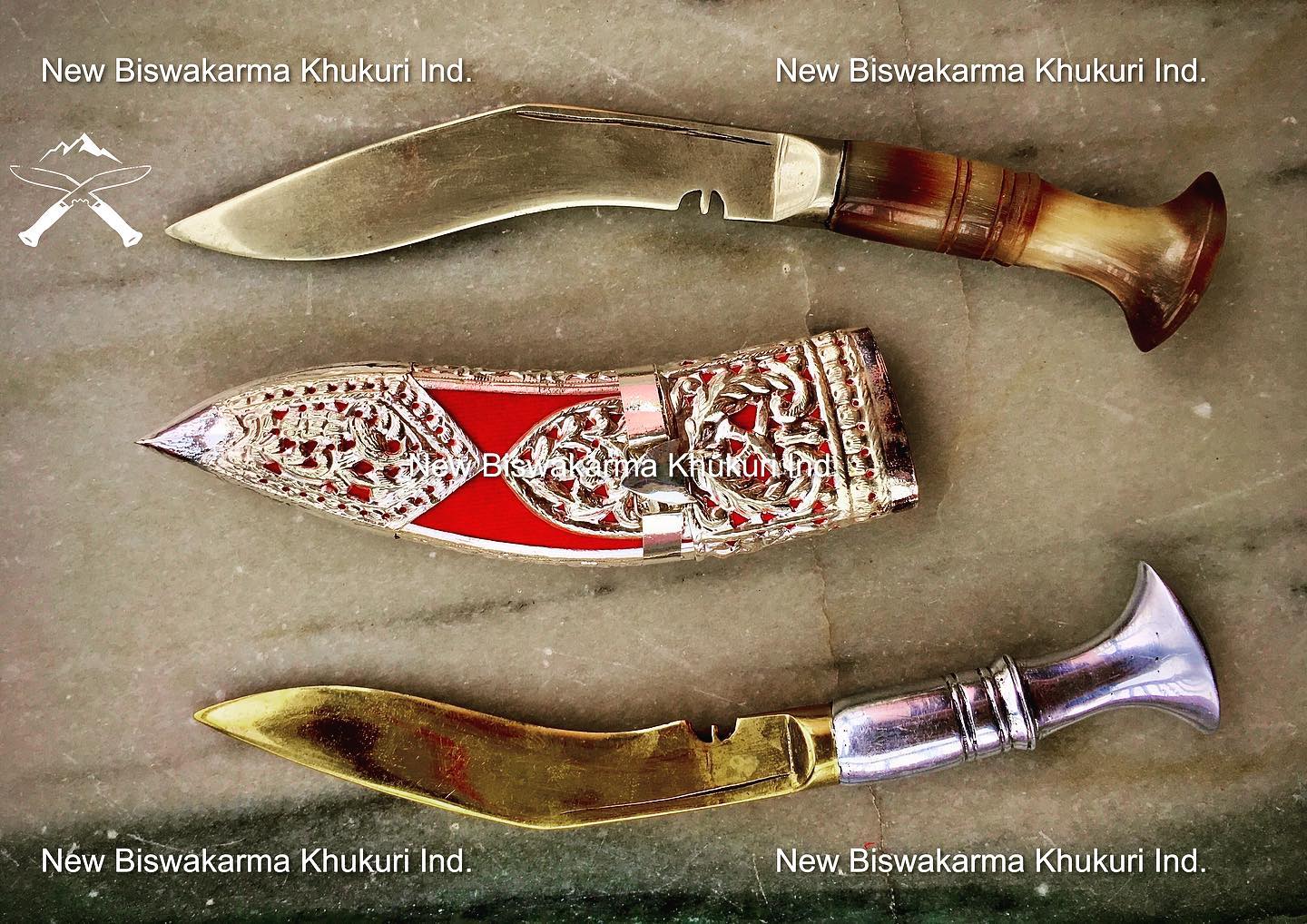Origin of khukuri (khukri)

The Khukuri holds a special place in Nepalese culture, deeply intertwined with the country's history and traditions. Originating from Nepal and surrounding regions, this distinctive knife with its inwardly curved blade has been wielded for centuries, embodying a blend of practical utility and symbolic significance. Renowned for its versatility, the Khukuri serves not only as a formidable weapon but also as a valuable tool for everyday tasks such as chopping wood and clearing vegetation. Its design, featuring a sturdy blade crafted from high-quality steel and a carefully crafted handle made from materials like wood or bone, reflects a balance of strength, durability, and ergonomic functionality. However, the Khukuri is more than just a tool; it carries profound cultural symbolism, particularly among the Gurkha people, whose valor and martial prowess have become legendary. As the primary weapon of Gurkha soldiers, the Khukuri symbolizes courage, honor, and national pride, earning admiration both within Nepal and beyond. Additionally, the knife plays a central role in Nepalese ceremonies and festivals, where it is revered as a symbol of divine power and protection. Beyond Nepal's borders, the Khukuri has garnered international recognition, cherished by collectors, outdoor enthusiasts, and martial artists alike for its historical significance and practicality. Thus, the Khukuri stands as a testament to Nepalese craftsmanship and cultural heritage, embodying a legacy of strength, resilience, and tradition.
History of Khukuri/Khukuri or kukuri:
The history of the Khukuri spans centuries and is deeply rooted in Nepalese culture and tradition. Originating in Nepal and surrounding regions, the Khukuri has played a crucial role in the lives of Nepalese people as both a tool and a weapon. Throughout history, it has been associated with significant events and cultural practices:
• Early beginnings: While the exact origins of the Khukuri are uncertain, it is believed to have evolved over time from similar curved blades used in the Indian subcontinent and Central Asia. Its design gradually became unique to Nepal, reflecting the country's distinct cultural and martial traditions.
• Gurkha Legacy: One of the most significant aspects of the Khukuri's history is its association with the Gurkha soldiers. The Gurkhas, known for their bravery and martial prowess, have wielded the Khukuri in battles across the world, from the hills of Nepal to the fields of Europe and beyond. Their fearless use of the Khukuri earned them a formidable reputation on the battlefield like world war I and II, which contributed to their legendary status in military history.
• Military Campaigns: The Khukuri gained international recognition during the various military campaigns in which Gurkha soldiers participated. Notable examples include their service in the British Indian Army during the Indian Rebellion of 1857 and both World Wars, where they demonstrated exceptional courage and combat effectiveness while wielding the Khukuri.
• Ceremonial Significance: Beyond its role in warfare, the Khukuri holds significant ceremonial importance in Nepalese culture. During festivals like Dashain, the Khukuri is worshipped as a symbol of divine power and protection. It is also used in various rituals and rites of passage ceremonies, symbolizing strength, honor, and tradition.
• Modern Significance: In contemporary times, the Khukuri continues to be revered as a symbol of Nepalese identity and craftsmanship. It is sought after by collectors and enthusiasts worldwide for its historical significance and practical utility, representing a tangible link to Nepal's rich cultural heritage. The history of the Khukuri is a testament to the enduring legacy of Nepalese craftsmanship and martial tradition, reflecting the resilience, courage, and cultural pride of the Nepalese people throughout the ages .